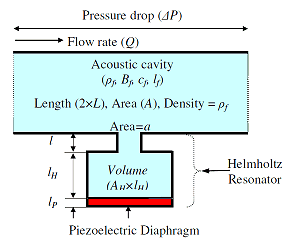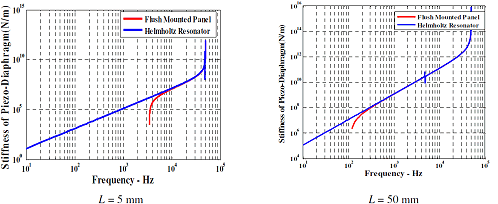|
Active Acoustic Cloaks
(Sponsor: Office of Naval Research)
The main objective of the proposed study is to develop an active “acoustic cloak” that can render the underwater vehicles (UV) “invisible” to incident acoustic waves. This insures the stealth operation of the UV.
The main approach places a particular emphasis on the development of a class of one-dimensional acoustic metamaterials with tunable effective densities and bulk modulus in an attempt to enable the adaptation to varying external environment. More importantly, the active metamaterials can be tailored to have increasing or decreasing variation of the material properties along and across the material volume. With such unique capabilities, physically realizable acoustic cloaks can be achieved and objects treated with these active metamaterials can become acoustically invisible.
The active acoustic metamaterials consist of an array of fluid cavities separated by piezoelectric boundaries. These boundaries control the stiffness of the individual cavity and in turn its dynamical density and bulk modulus. Various control strategies are considered to achieve different spectral and spatial control of the density of this class of acoustic metamaterials.

Basic configuration of the acoustic cloak |
Ideal distributions of the density and the bulk modulus inside an effective cloak |
- Density of Material A increasing two orders of magnitude along cloak
- Density of Material B decreasing two orders of magnitude along cloak
- Bulk’s modulus decreasing two order of magnitude along cloak
There are no natural materials that are capable of providing such unique material properties |
- Active Constituent materials
- Constituents A & B look mechanically the same
- Constituents A & B are programmable electrically to desired properties
The configuration of the active metamaterial is as shown below:

Basic configuration of active acoustic metamaterial |
The tunability of the active acoustic metamaterial is shown below:
A. Baz, “An Active Acoustic Metamaterial with Tunable Effective Density”, ASME Journal of Vibration & Acoustics, Vol. 132, No. 2, 2010.
A. Baz, “The Structure of an Active Acoustic Metamaterial with Tunable Effective Density”, New Journal of Physics, Vol 11, 1230102009, 2009.
Two configurations of the active metamaterial are shown below:
1. Acoustic Cavity with Helmholtz Resonator

2. Acoustic Cavity with Flush-mounted Panel Resonator

The main characteristics of this class of materials are shown below:

(a) Resultant relative bulk modulus |

(b) Closed-loop stiffness of piezo-diaphragm |

Comparison between performance of acoustic cavity with Helmholtz resonator and cavity with flush-mounted panel for
Br=20.0, Cs=10E-17 f, LP=10E9 H |
W. Akl, and A. Baz, “Multi-cell Active Acoustic Metamaterial with Programmable Bulk Modulus”, Journal of Intelligent Material Systems and Structures, Vol. 21, pp. 541-556, March 2010.
W. Akl, and A. Baz, “Configurations of Active Acoustic Metamaterial with Programmable Bulk Modulus”, Paper # 7643-93, Smart Structures and Material Conference, San Diego, CA, March 8-11, 2010
Top of Page
|

